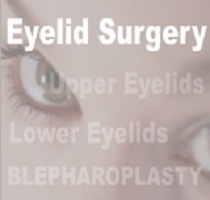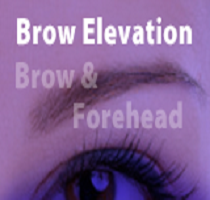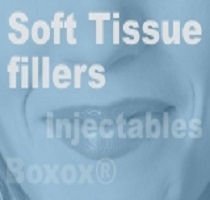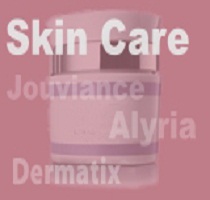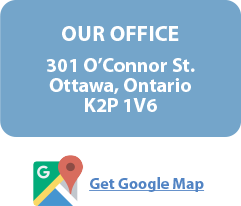Laser skin resurfacing
(FAQ)
Commonly asked questions and answers
Be sure you know the pros and cons
Laser skin resurfacing refers to a newly introduced technique utilizing a carbon dioxide laser to remove facial wrinkles.
This technique has also been referred to as laser skin rejuvenation, laser abrasion, laser peel or laser ablation. The carbon dioxide laser produces a continuous beam at a 10,600 nm wave length that vaporizes the tissue it comes in contact with due to its absorption by intracellular water. The tissue contact time is extremely short. As a result, layer by layer removal of skin can be achieved without the extensive thermal damage and scarring that was seen with earlier models of carbon dioxide lasers.
The laser technique is available to correct facial wrinkles, excess eyelid skin, excess eyelid fat bags, crows feet, brow furrows, lip lines, roughened skin due to acne as well as aging spots and a number of other lumps and bumps.
The laser can be used in two ways; resurfacing and cutting. Skin resurfacing removes the outer layer of skin (epidermis) and a variable amount of the second layer of skin (dermis) to remove aging, sun damaged or wrinkled skin. As the skin heals, a smoother surface (epidermis) along with realignment of collagen and new collagen gives the skin a younger, healthier, rejuvinated appearance.
n the eyelid area, the same laser can be used in a cutting mode to remove the excess upper lid skin as well as fat in the upper and lower lids. The laser in the cutting mode replaces the scalpel and has the advantage of coagulation of tissue as it cuts. As a result, there is less bleeding, less bruising and less swelling than with scalpel surgery.
Media coverage and hype
Laser surgery has recently had a great deal of publicity and has been the subject of numerous magazine articles, newspaper reports and talk shows with one notable television personality having his own laser resurfacing performed live on the talk show. Laser skin resurfacing is a cosmetic procedure that is fee for service and not covered by insurance plans (OHIP) unless the laser is being used in a reconstructive way, for example scar revisions.
The cosmetic industry is enormous and with any new product or technique, there is marketing done to provide information to potential customers. For the consumer, it is important, although sometimes difficult, to sort through and determine the advantages and disadvantages of this technique over other treatment modalities. The purpose of this report is to provide you with some information about this new technique and answer some of the commonly asked questions.
What are the alternatives?
Dermabrasion, chemical peels and face lifts are alternatives to laser resurfacing. In dermabrasion, the top layer of skin is literally sanded off. The depth can be hard to control, it can be painful and scabs often take 2 weeks or more to heal. It is best for scars and very thick areas of skin. In chemical peels, mild acidic solution is applied to remove the surface tissue. The depth of a chemical peel is influenced by many variables including the type and concentration of the agent used, the time of application, skin type (dry vs oily), skin preparation and regional anatomy. Experienced peelers can achieve fairly reliable results but all of these variables can make it difficult especially for occasional practitioners, to achieve uniform and reliable depth of injury. Facelift surgery can improve contours and remove excess tissues, but it cannot alter the texture and elasticity of the skin. Laser resurfacing, on the other hand, creates a superficial skin wound. The dermis reacts with a healing response characterized by new collagen formation and regeneration of new epidermis. As the skin heals, a smoother surface (epidermis) along with realignment of collagen and new collagen in the dermis gives the skin a younger appearance. The main advantage of laser skin resurfacing over other modalities is the exquisite control over the depth of tissue injury.
How is it done? Does it hurt?
Laser skin resurfacing and eyelid laser surgery is done as an outpatient. A local anesthetic is infiltrated into the tissue to be lasered along with oral and/or intravenous sedation. For localized areas such as the upper eyelids, the upper lip, local infiltration on its own is all that is required. For lower eyelids and larger areas on the face, some intravenous sedation is also given. Once the patient is relaxed and the tissue is frozen, the laser procedure is pain free in most. Additional local is given as required. Postoperatively, the most common complaint is that the lasered tissue gives a burning sensation. This is relieved by cool face cloths and Tylenol. It generally disappears in the first week.
What about the healing and time off? How soon will results be visible?
Most media reports suggest that after a short painless procedure, one goes home with new skin and that is it. Unfortunately, the procedure is not that simple. A successful laser resurfacing causes a partial thickness cutaneous burn injury that has to undergo a process of wound healing with re-epithelialization which occurs over 7 to 10 days. The skin has to be monitored carefully and kept moist. The patient contemplating laser should therefore plan on being off work for 10 to 14 days. A smooth layer of Vaseline applied at regular intervals facilitates the re-epithelialization process. During this first week (7 – 10 days), the lasered skin is red, oozes and crusts. Once re-epithelialization is complete, the Vaseline is stopped. The new skin will be smoother and younger looking but will appear pink to red. Cover-up cosmetics can be applied at this stage to hide the discoloration and the patient can return to work and the social environmnent. The discolored skin will return to a normal color in 3 weeks to 3 months in 98% of patients. It is not possible to tell who is going to get normal skin color back in 3 weeks and who is going to go for 3 months. The patient has to be prepared to cover the discoloration for this period. The larger the area of resurfacing, the more care required. Those having full face laser will require the most skin care while those just having the lip or upper lids done will require much less.
How long will the results last?
Removal of excess skin and fat from the eyelids (blepharoplasty) usually lasts for about 10 years. The wrinkle removal with laser skin resurfacing is currently thought to be long lasting but we don’t know for sure since the laser has only been out for a few years. We expect it to last between 5 and 10 years. It should be emphasized that the continuing effects of exposure to sunlight and wind as well as the natural aging process will all contribute to the aging process and the skin’s future appearance.
What are the risks of laser resurfacing?
Possible side effects include redness. This will be seen to some degree in everyone and lasts 3 to 12 weeks and rarely longer. The discolored skin can be covered with makeup within 7 to 10 days. Sensation of skin tightness may occur for 3 – 8 weeks while the tissue is healing. Infection is extremely rare but if it occurs, it can delay healing and lead to scarring. Prophylactic antibiotics are given to those having large areas of skin lasered. Temporary hyperpigmentation in up to 10% may occur and is treatable with medication. A permanent pigment change occurs in less than 1% of cases – occasional hypopigmentation occurs in less than 3% (olive or dark skinned people are risk for this). Activation of herpes simplex occurs in less than 1% (prophylactic treatment is needed pre-laser for those having a past history). Scarring occurs in less than 1% of patients. Recurrence of wrinkles in some areas may occur and require touch-up. If touch-ups are required, they are done at 3 months when the tissues have healed completely.
Does it work?
Yes, it does. For eyelid surgery (blepharoplasty), there is no question the laser offers several advantages over scalpel surgery. The laser is quicker and there is less bruising and swelling of the tissues. The fine lower lid wrinkles and crows feet are treated more effectively than scalpel surgery and there is less chance of lower lid retraction with the laser as compared to scalpel surgery.
The improvement in wrinkles elsewhere on the face is also gratifying to patients and physicians. Virtually all patients will achieve a significant reduction in wrinkles and scars. Fair skinned individuals with mild, moderate or severe wrinkles (when their face is without animation) are the best candidates for laser treatment. Touch-ups can be done if the first treatment is not as effective as one desires and are usually done at 3 months.
If you have any questions regarding the topics of this newsletter, or requests for future topics of InSight, please contact Dr. David R. Jordan office by telephone at (613) 563-3800.


